Jives, Jigs and Jazz: Musicians, dances and celebrations on the Sunshine Coast in the early 20th century.
By Christina Ealing-Godbold, Research Librarian, Library and Client Services | 24 January 2022
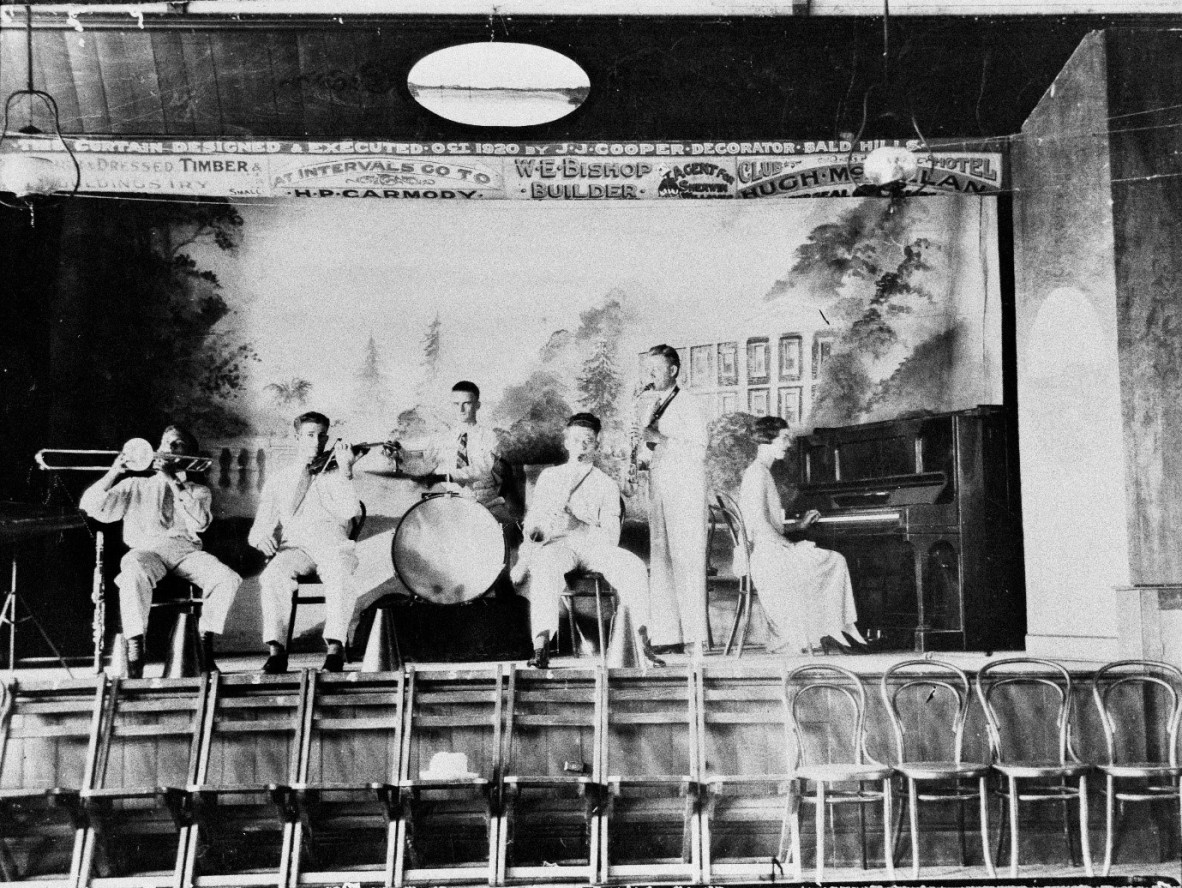
Dance band performing in the Old Memorial Hall located on Kings Street, Caboolture, Queensland, ca. 1929
Left to right: Roy McPherson; Dud Seeney; Vic Davies; Keith Bentley; Bill Bruce; Maisie Bruce. (Description supplied with photograph).
Available online at https://hdl.handle.net/10462/deriv/248630
photographic print : black & white , ca. 1929. Negative number: 9083.
The North coast region of South East Queensland has always attracted musicians and music festivals. Especially at holiday times, visitors loved to dance and sing after a day of fishing and surfing. Beach theatres like the Digger’s Hall and Evans Beach theatre at Maroochydore included vaudeville performances, dance bands, and of course, earlier in the evening, pictures were shown – silent films and then later, the ‘talkies”. After the pictures, the floor was cleared for dancing which often went on until 2am, with a supper break at midnight. Popular music groups were Mr and Mrs W. Morrison’s Orchestra, the Johnson Orchestra, the Kuskopf Orchestra, Les Dent’s jazz band, W. Aspland’s band, and a number of female musicians such as Miss Mullan’s orchestra, all of which were very active in the ocean side resorts.
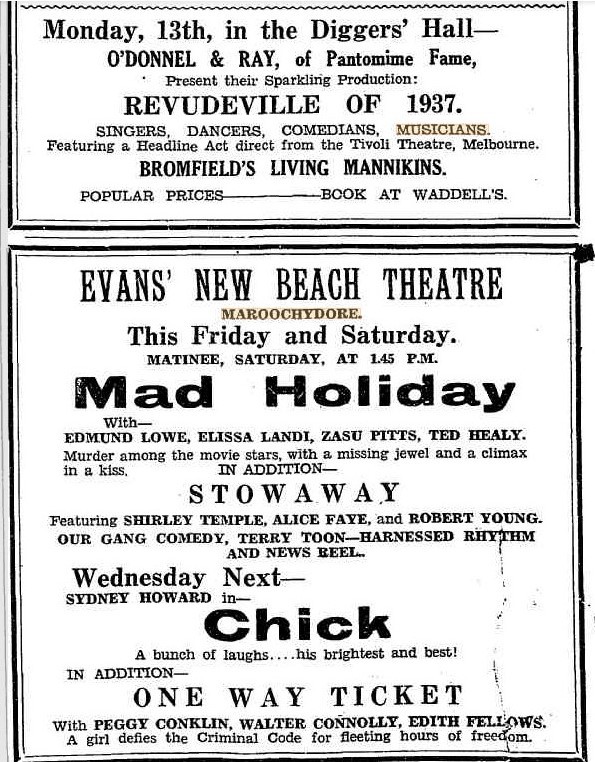
'Advertising', Nambour Chronicle and North Coast Advertiser, 10 September 1937, p.6.
http://nla.gov.au/nla.news-article77860621
A century ago, dedicated musicians playing violin and piano, or violin and accordion performed for long evenings, providing the dancers of the hinterland towns with dancing music. There were many “Plain and Fancy-Dress balls” where I imagine you could choose to come in either kind of dress. They were held in Nambour, Landsborough, and all the townships in the Sunshine Coast area. The musicians were named in the newspaper articles and included both men and women. Mostly, the violin, piano and accordion were the principal instruments, but on occasions, they were joined by a banjo, a guitar, a piano, cornet, saxophone or trombone or a vocalist. Their stamina is to be admired as they played different dance music, with different timings suitable for the waltz, the quick step, the two step and the Charleston, just to name a few.
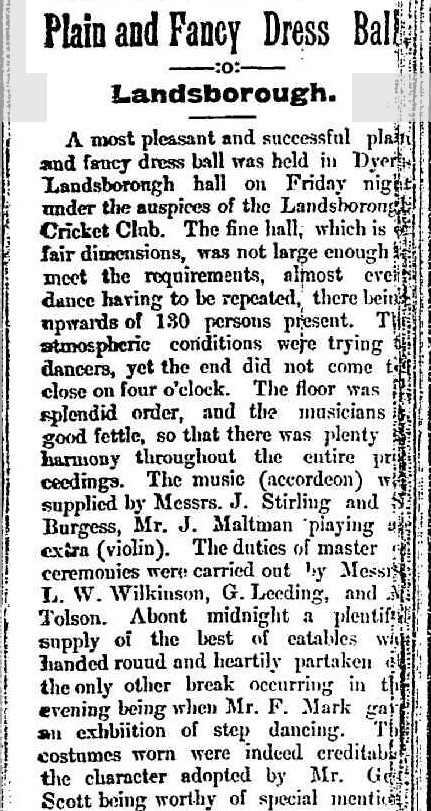
'Plain and Fancy Dress Ball', Chronicle and North Coast Advertiser, 17 November 1905, p. 4
http://nla.gov.au/nla.news-article81981690.
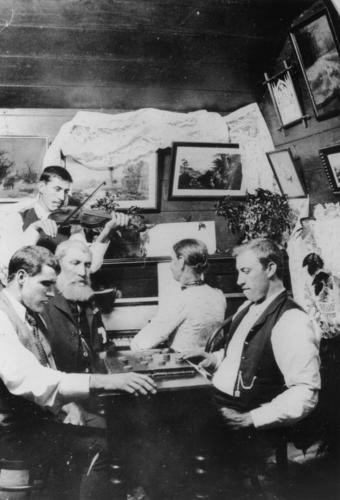
Grigor family of the Glass House Mountains, demonstrating the piano and violin combination so popular at country hall dances. This piano is still on view at Bankfort House.
Available online at https://hdl.handle.net/10462/deriv/96440.
Mr Kuskopf of Maroochydore and his brother had their own orchestra. Seeing the beautiful cotton trees of the Maroochydore area, he decided to make violins and guitars from the cotton tree wood, and he used them in his orchestra.
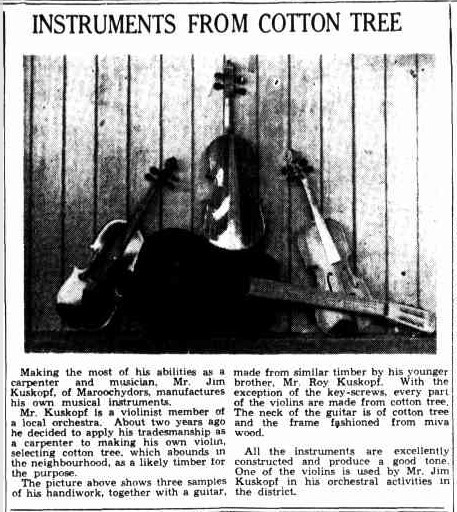
'INSTRUMENTS FROM COTTON TREE', The Telegraph (Brisbane), 9 November 1935, p. 7
http://nla.gov.au/nla.news-article179955451
What music did they play? The music of the 1920s and 1930s covered the emerging jazz genre, the traditional polkas and waltzes, old time ballroom dance music and modern popular music of the day. From newspaper articles, it is obvious that all kinds of music were enjoyed, both in the campgrounds and dance halls by the beach, and in the Schools of Arts halls in the country towns.
State Library of Queensland's sheet music collection has wonderful examples of the dance music of the 1920s and 1930s and the jazz standards of the day, published in the sheet music albums most probably used by the musicians of the day. Alberts, Francis and Day, Allan’s and other companies produced wonderful Dance Folios, many of which are available in our extensive State Library sheet music collection. Songs like “Bye Bye Blackbird”, “Yale Blues” and “Georgia Rose” are all here and ready to be played. State Library's music databases may have other scores not included in the printed form and membership of the library allows access to this treasure trove. Find the list of music databases available via the e-resources tab on the One Search Catalogue.
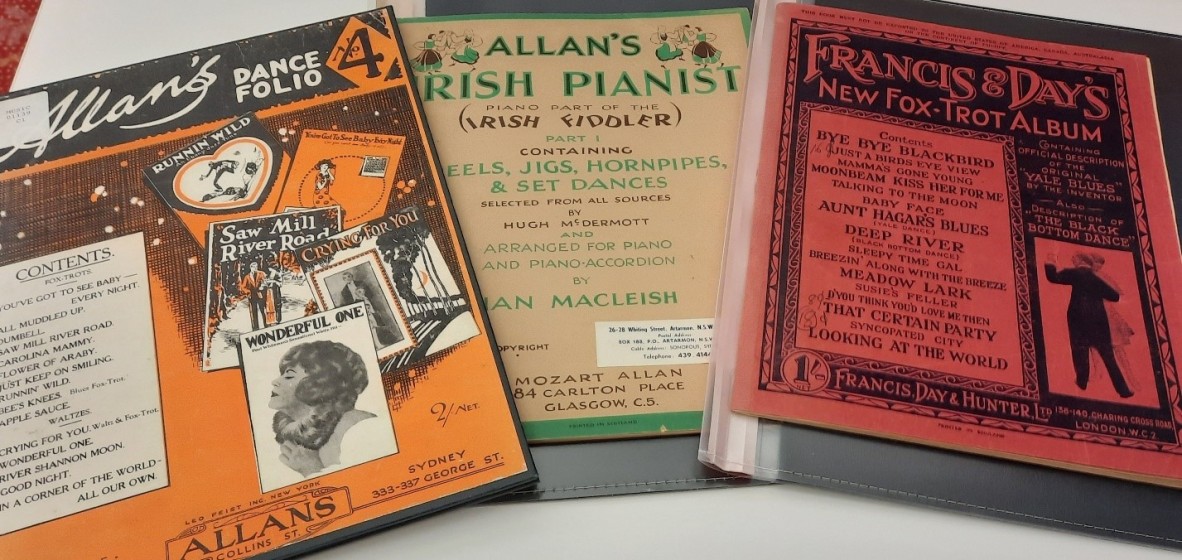
Sheet music albums from the music collection at State Library of Queensland.
Photograph courtesy of Christina Ealing-Godbold, State Library of Queensland.
Jazz came to the Sunshine Coast when in 1924, it is reported that 200 people danced to a jazz band in Murtagh’s Dance Arcade at Maroochydore for a Jazz Festival – this was the flapper era, and so it is hard to imagine 200 flappers dancing in a small hall on the beach. By 1932, Jazzland was established in Maroochydore, with Les Thompson’s band providing the music. The “young things” of the day were celebrated by this cover of The Queenslander in 1930, showing the newly mobile young people that could make their way to the coast for short holidays or days out.
Boarding Houses at the beach hosted and promoted the dances and music concerts and they were exceptionally well attended.
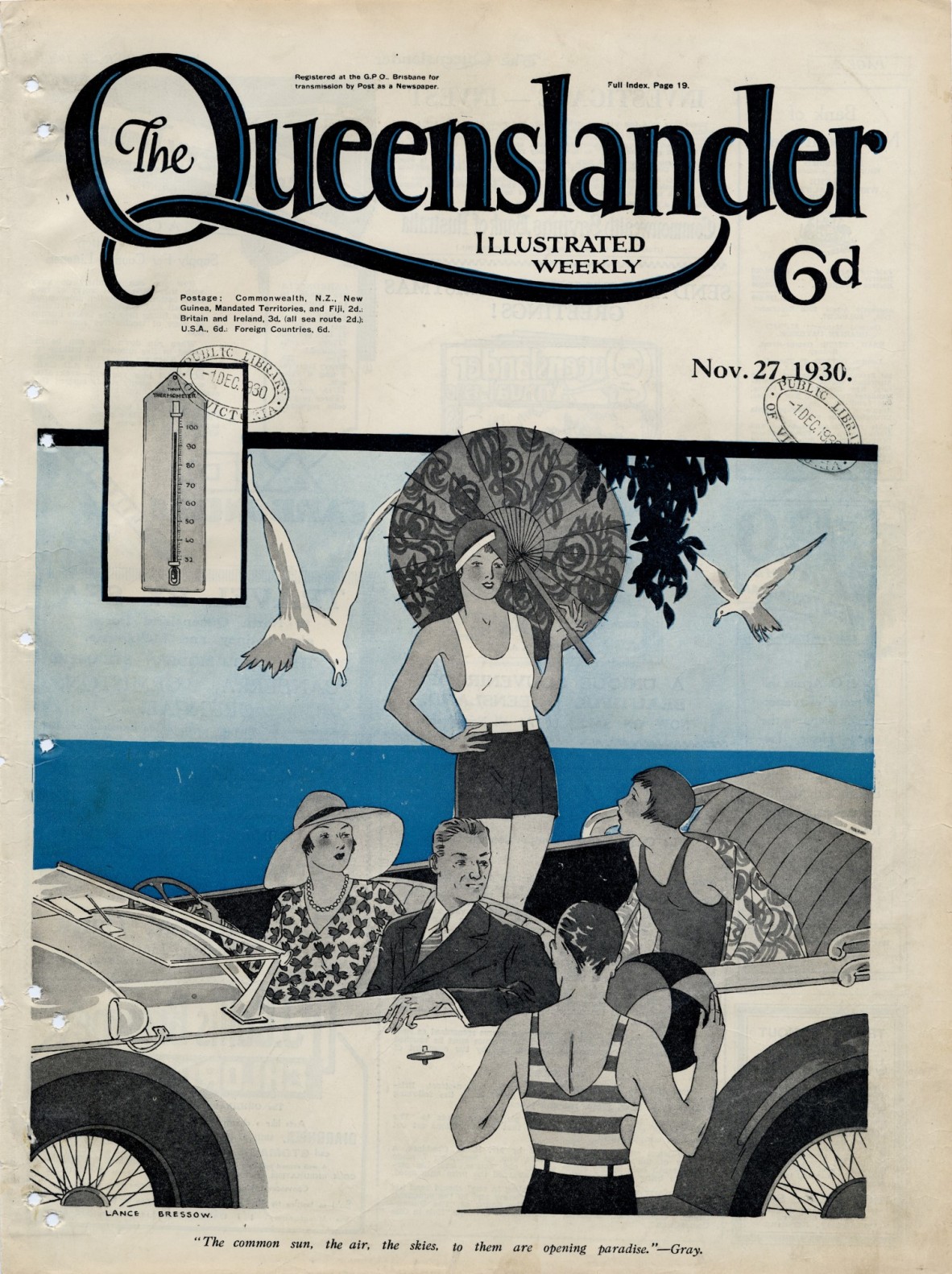
Illustrated front cover from The Queenslander, November 27, 1930.
Available online at: https://hdl.handle.net/10462/deriv/224794.
Town bands were a source of great civic pride. Nambour Town Band was operating as early as 1910 and had a distinctive white uniform. Maroochydore established a town band in the 1930s, using Mr W. W. Johnson who previously conducted the town band in Kingaroy.
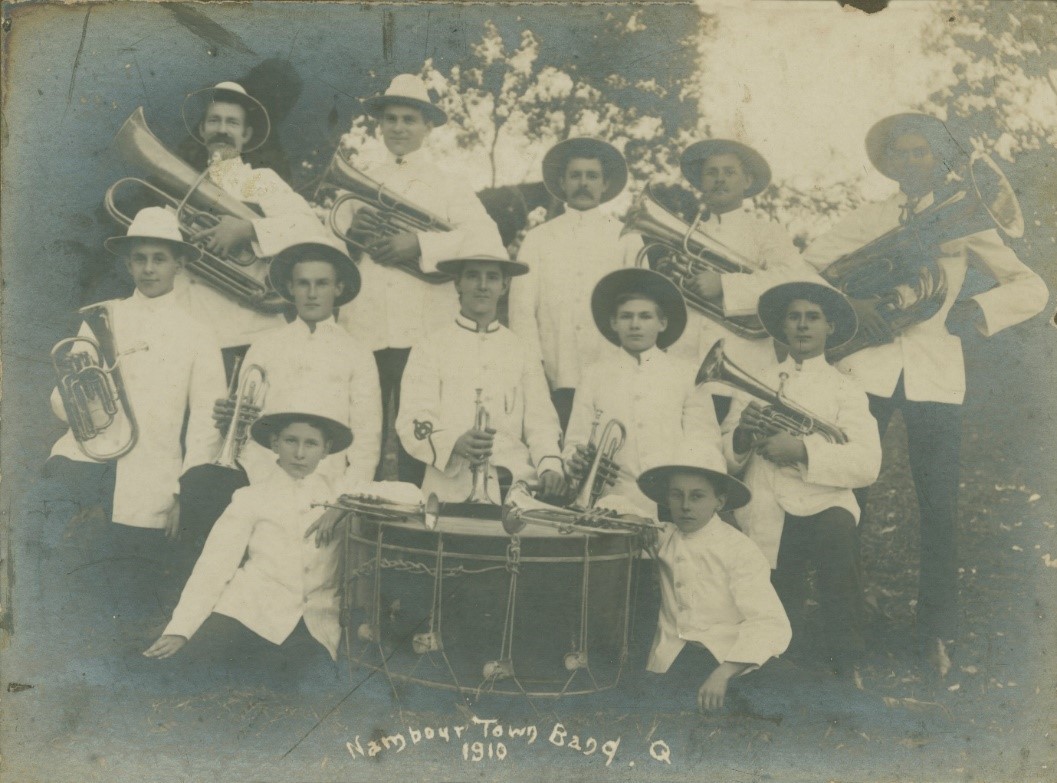
Nambour Town Band in 1910, John Oxley Library, State Library of Queensland.
Available online at: http://hdl.handle.net/10462/deriv/121341.
Community singing was often on the programmes for the beach theatres. The popularity of community singing was paramount from World War One right through to the 1950s.
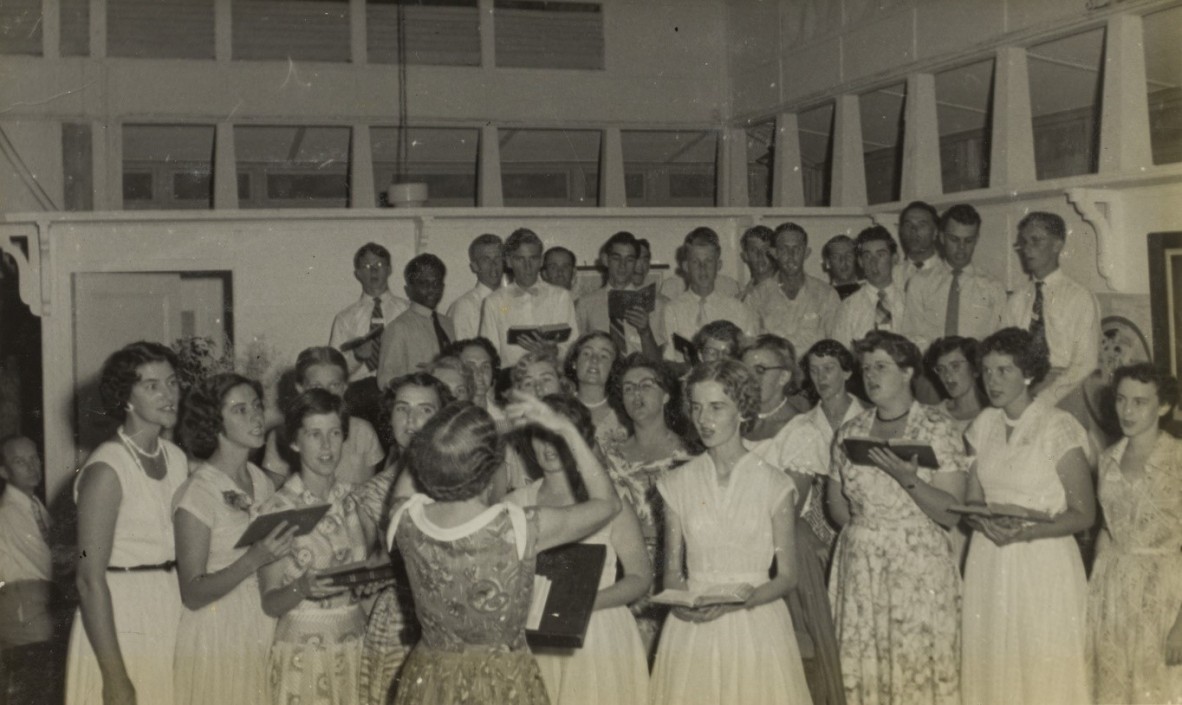
Choir Group at Alexandra Headlands.
31870 Norman F.14 Nelson Alexandra Park Camp photograph albums and typescript
Available online at: https://hdl.handle.net/10462/photostd/00196194
Singing songs from musicals and films was always a popular entertainment option at beach theatres and concerts in country halls. Indeed, the ‘pictures’ was an important part of going on holidays. Many of the films were the conveyors of the popular songs of the day, and of course, the silent movies usually had a pianist to accompany the images. Mrs Davey of Bli Bli was often an accompanist for concerts and films, as well as the choral society of Nambour.
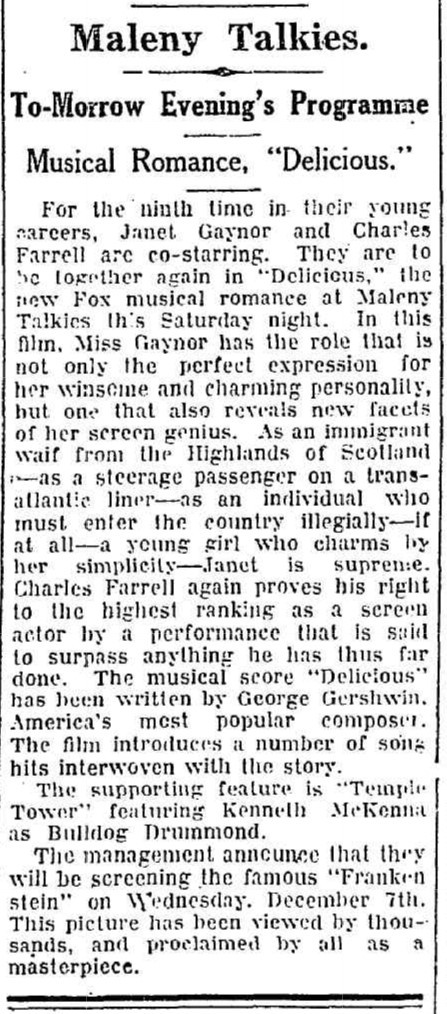
'Maleny Talkies.', Nambour Chronicle and North Coast Advertiser, 2 December 1932, p. 8.
http://nla.gov.au/nla.news-article76890518
The Sunshine Coast of the past demonstrated the power of music to bring joy, to heal after traumatic wars and financial depressions and to ensure holiday makers had a wonderful time on their visit to the beach. Musicians demonstrated great staying power in their ability to entertain for very long periods of time, without the aids of amplifiers and stage technicians and often with simple instruments. From the dances of small rural communities in Landsborough, Maleny and Yandina to the jazz moves of the urban holiday visitors in Maroochydore, music enriched the lives of the people of the Sunshine Coast from the 1870s and continues to do so.
If you are interested in the music collections at State Library, you will enjoy our free public webinar via Zoom on the music collections, to be held on 21 March 2022 at 4.00pm. Register in advance. The webinar will explain the many treasures contained in State Library's music collections, for those who enjoy playing music and those who like to listen.
Some relevant collections at State Library
Original Materials
Request and view on Level 4
- 28450 Nambour and District Photographs ca.1890s - 1950s
- 28546 The Story Project: Sunshine Coast Oral History Pilot Project 2011
- 28615 Sport St. variations for solo clarinet ca. 1990
- 32205 Sean O'Boyle AM papers.
- 30620 Dennis Drouyn papers 1930-2013
Selected music scores
- The sunshine state words and music by Clyde Collins.
- Queensland waltz by Leila Ruth Rowland.
- Fanfares for Gympie. / Ralph Hultgren.
- The Queensland waltz by John Young
- Allan's dance album no. 4
- Albert's barn dance medley no. 1 in four parts
- Allan's dance folio no. 10
- Allan's Irish pianist selected from all sources by Hugh McDermott and arranged for piano and piano-accordion by Ian Macleish.
- Francis & Day's new fox-trot album
- Francis & Day's 37th annual with tonic-sol-fa setting
Selected music databases
More information
Music collections - /research-collections/information-collections/music
Ask us - /plan-my-visit/services/ask-us
Library membership - /get-involved/become-member
One Search catalogue - http://onesearch.slq.qld.gov.au/
Borrowing - /plan-my-visit/services/borrowing
Comments
Your email address will not be published.
We welcome relevant, respectful comments.